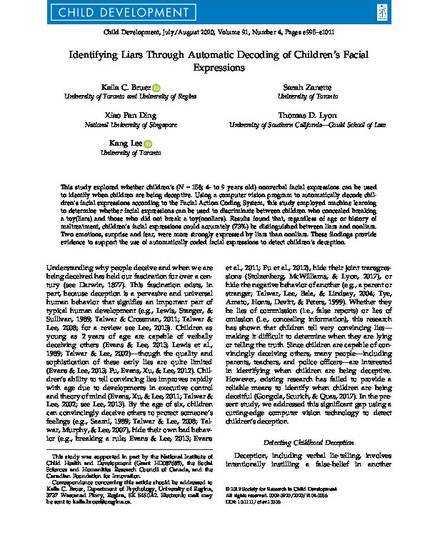
Article
72. Identifying liars through automatic decoding of children’s facial expressions.
Child Development (Published 2020)
(2019)
Abstract
This study explored whether children’s (N=158; 4-9 years-old) nonverbal facial expressions can be used to identify when children are being deceptive. Using a computer vision program to automatically decode children’s facial expressions according to the Facial Action Coding System, this study employed machine learning to determine whether facial expressions can be used to discriminate between children who concealed breaking a toy(liars) and those who did not break a toy(nonliars). Results found that, regardless of age or history of maltreatment, children’s facial expressions could accurately (73%) distinguished between liars and nonliars. Two emotions, surprise and fear, were more strongly expressed by liars than nonliars. These findings provide evidence to support the use of automatically coded facial expressions to detect children’s deception.
Keywords
- deception detection,
- facial expressions,
- child witness,
- child abuse,
- child sexual abuse,
- automatic decoding,
- identifying liars
Disciplines
Publication Date
Summer September 6, 2019
Citation Information
Bruer, K.C., Zanette, S., Ding, X.P., Lyon, T.D., & Lee, K. (2020). Identifying liars through automatic decoding of children’s facial expressions. Child Development, 91, e995-e1011.
